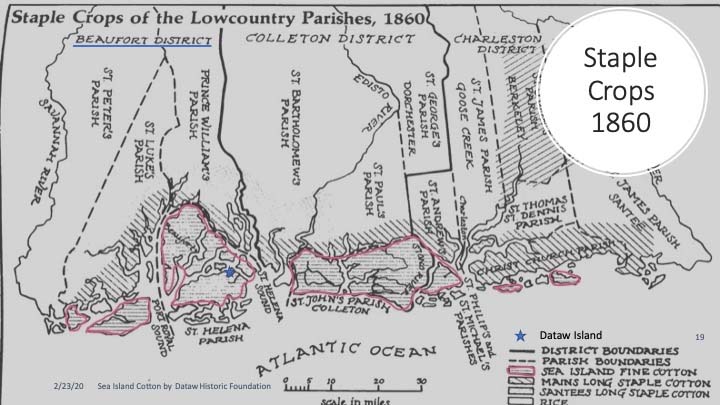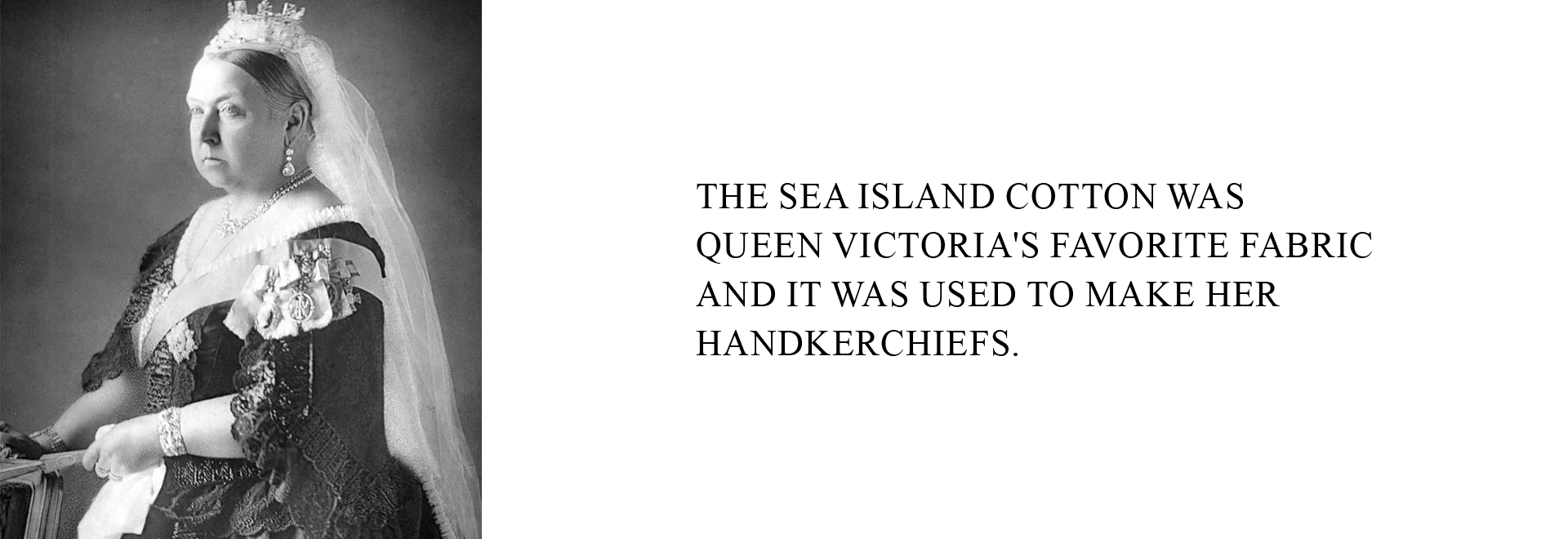
‘The world’s rarest, finest and most luxurious cotton
The Story’
Sea Island cotton is a tropical American species of cotton with Extra Long Staple fibers of about 35mm long. They are extremely soft, silky and luxurious. It got its name from the low country sea islands where it was cultivated. The unmatched and superior quality of the Sea Island Cotton makes it one of the finest fabrics in the world. They are cultivated only in smaller quantities and account for only 8% of the total cotton production across the globe. The first class quality of the cotton makes it the most desirable fabric and is also highly prized.
Sea Island cotton has a rich and fascinating history that spans several centuries. From its origins in the early days of cotton cultivation to its heyday as a symbol of wealth and luxury, Sea Island cotton has played an important role in the history of cotton and the global textile industry.
In this blog, we will explore the history of Sea Island cotton, from its humble beginnings to its current status as a rare and coveted commodity.
The history
Sea Island Cotton (Gossypium Barbadense) is one of the rarest and luxurious cottons available in the world. Its history roots back to the year 1786. In 1786 this unique cotton type was first cultivated by people in the Beaufort area.
- 16th century: Spanish colonisers introduce cotton to the Caribbean.
- 18th century: Cotton becomes a major export crop in British colonies, including Barbados, Jamaica, and Antigua, but the cotton varieties grown are not particularly high quality.
- Early 18th century: Cotton cultivation begins to spread to the American South, particularly South Carolina.
- The 1790s: Sea Island cotton is first cultivated on the Sea Islands off the coast of South Carolina and Georgia.
- Late 18th century:Sea Island cotton is cultivated as a hybrid of several different cotton varieties, including Egyptian and Asiatic cotton, and is carefully cultivated by planters to produce long, fine fibers. And became prized for its use in luxury textiles, particularly fine linens and laces.
Sams and the Sea Island Cotton
North American planters started cultivating cotton in the 17th century when there was European exploration. Inorder to encourage the wealthy English planters to settle in North America King Charles II implemented forced labor. Due to this the cultivation of rice and indigo flourished. Later the indigo started declining as the British were not interested in buying indigo to color dye their Royal Navy uniforms. To replace the declining trade of Indigo, after the revolutionary war in 1783, the Sea Island Cotton was introduced. The demand for cotton increased when the French fashion industry was booming. The raw cotton was weaved into fine and comfortable fabrics for the French. They preferred clothes made out of cotton over the traditional hemp. The demand accelerated the development of power looms to produce cotton clothes. By 1795 the Sea Island cotton was planted in Hilton Head, South Carolina and millions of pounds were exported to textile manufacturers in France, England and Europe. This trade brought tremendous wealth to all the planters.

(Pic courtesy – Dataw Historic Foundation)
The William Sams inherited Datha island for Indigo plantation. The family reaped its benefits for many years. The Sams brothers had more than 3500 acres of plantation and almost 294 enslaved people. They had cotton plantations on Datha and Lady’s island. Only one type of
cotton, the Sea Island Cotton, grew in the sea islands of South Carolina and it was also in demand across the globe. The region served the suitable climatic conditions required for Sea Island Cotton to grow. The cotton was grown, handpicked and processed for market only by the enslaved individuals. In the 18th century most of the cotton from South Carolina was exported to England and European countries like France.
The Rise of Sea Island as a Luxury Textile
Sea Island cotton became a favorite of the wealthy elite in Europe and North America in the late 18th and early 19th centuries, due to its exceptional quality and versatility. The long, silky fibers made it ideal for use in a variety of luxury textiles, including fine linens, lace, and clothing. It was also valued for its strength and durability, which made it a practical choice for everyday garments as well.

It quickly gained a reputation as one of the world’s finest cotton, and demand for it grew rapidly among luxury textile manufacturers and consumers. The high prices commanded by Sea Island cotton cultivators helped to establish it as a luxury commodity, and its association with wealth and status only added to its appeal among the upper classes.
The Decline of Sea Island Cotton and its Legacy
Despite its early success as a luxury commodity, it faced a number of challenges that ultimately led to its decline in the early 20th century. One of the biggest factors was the arrival of the boll weevil, a pest that devastated cotton crops across the American South in the early 1900s. This cotton was particularly vulnerable to the pest, which contributed to a decline in yields and quality.
Despite the tremendous damage, the soil temperatures of the sea islands favored the survival of a few plants. The seeds that survived were treasured by the planters and preserved in an agricultural research center in Texas. Though the original strain is lost, the researchers crossbred and made other exquisite strains of the cotton variety for future generations.
Sea Island cotton in the modern era: In the modern era, Sea Island cotton has become an iconic and highly sought-after material in the world of high-end textiles and fashion. Although the production has declined significantly in the United States since the early 20th century, it has seen a revival in the West Indies, where it is grown and harvested by a small group of farmers and artisans.
” Did you know?
James Bond (Daniel Craig) wore shirts made of this cotton in several films directed by Ian Flemming.”
Today, it is known for its exceptional quality and rarity, with only a limited amount of cotton being produced each year. Its long, silky fibers and exceptional strength and softness make it a favorite of designers and luxury brands, who use it to create some of the most exclusive and high-end textiles from high-end suits and dresses to luxury bedding and home furnishings.
Reflection on the enduring appeal of Sea Island Cotton in the 21st century
In an era when fast fashion dominates the industry, the enduring appeal of this cotton highlights the importance of quality over quantity and ethical production practices. As consumers become more aware of the social and environmental impacts of their purchasing decisions, the appeal of Sea Island cotton is likely to continue to grow. Its rarity and cultural significance make it an attractive choice for those who value both quality and sustainability.


